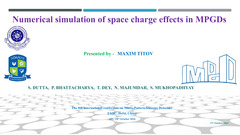Shubhabrata Dutta
Applied Nuclear Physics Division, Saha Institute of Nuclear Physics, A CI of Homi Bhabha National Institute, 1/AF Block, Bidhannagar, Kolkata - 700064, West Bengal, India
Purba Bhattacharya
Department of Physics, School of Basic and Applied Sciences, Adamas University, Kolkata - 700126, West Bengal, India
Tanay Dey
School of Physical Sciences, National Institute for Science Education and Research, Jatni, Khurda - 752050, Odisha, India
Nayana Majumdar
Applied Nuclear Physics Division, Saha Institute of Nuclear Physics, A CI of Homi Bhabha National Institute, 1/AF Block, Bidhannagar, Kolkata - 700064, West Bengal, India
Supratik Mukhopadhyay
Retired from Applied Nuclear Physics Division, Saha Institute of Nuclear Physics, A CI of Homi Bhabha National Institute, 1/AF Block, Bidhannagar, Kolkata - 700064, West Bengal, India




Comment submit